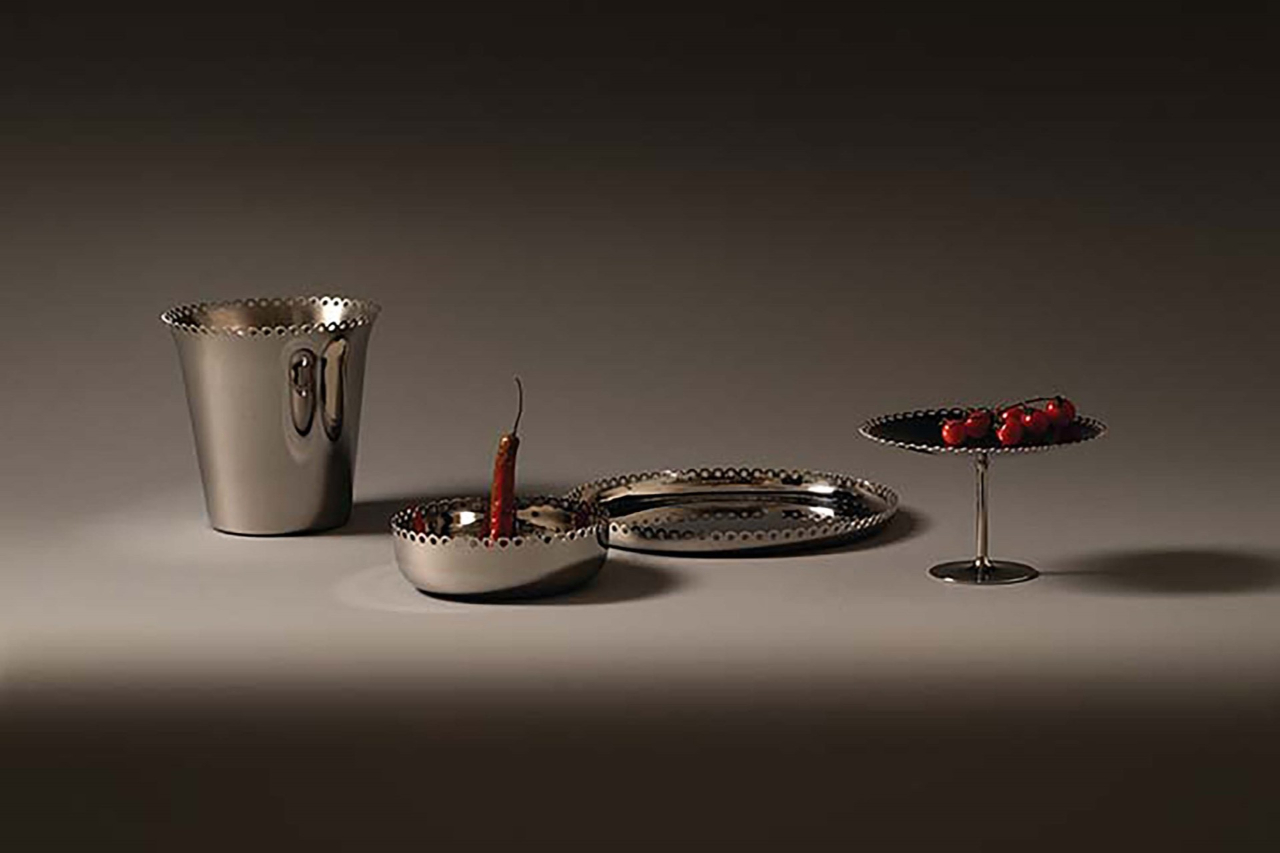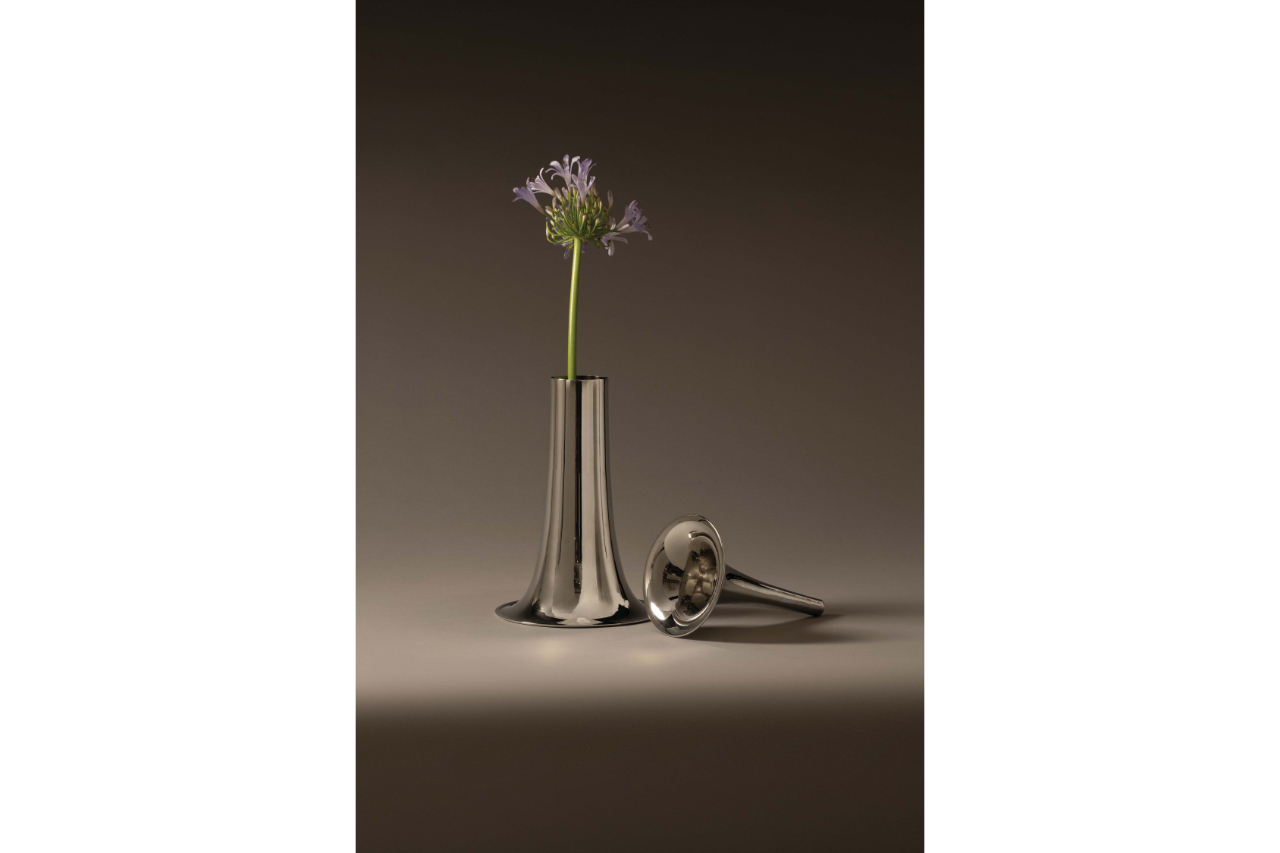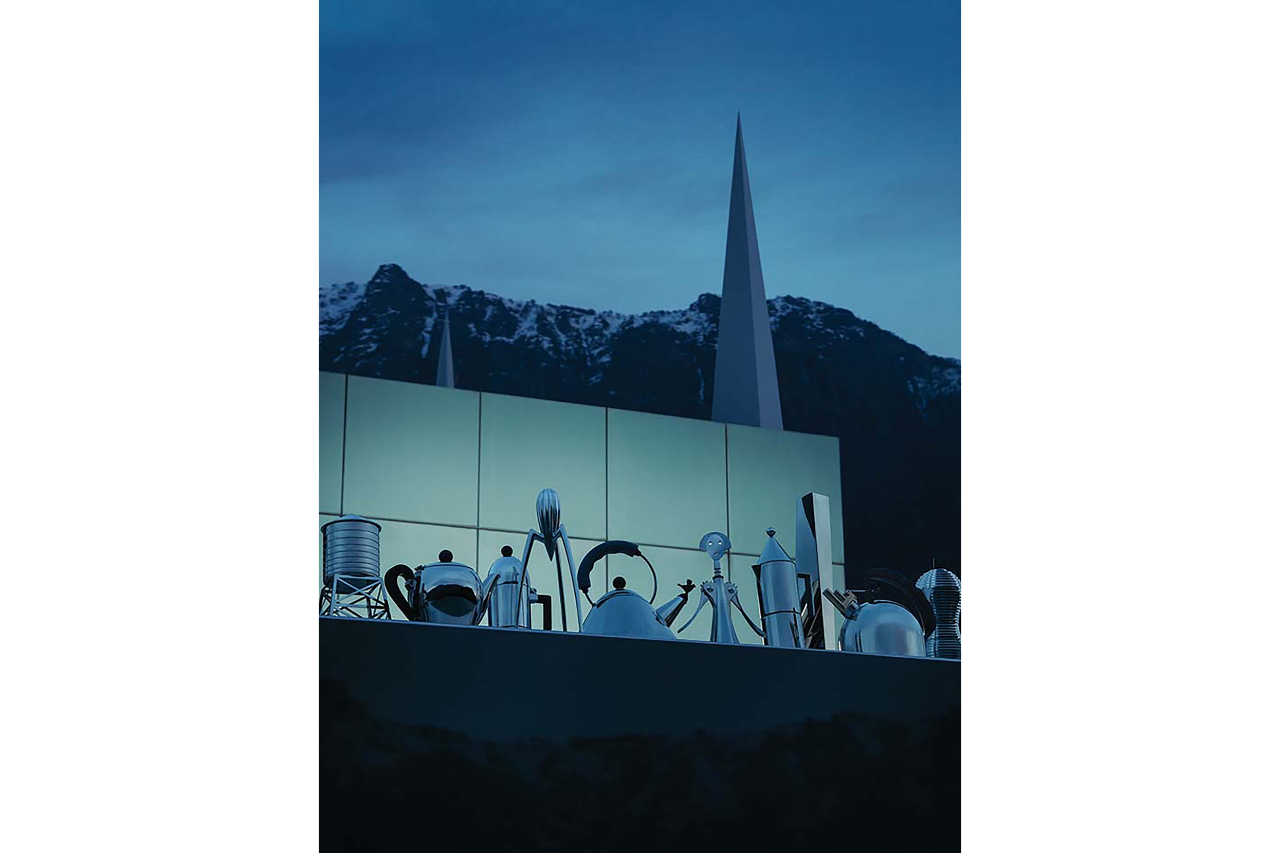









Under the guidance of Alberto Alessi and Giulio Iacchetti, the new brand assembled nine designers from various corners of the globe. Their task was to craft an object that embodies the essence of containment.
“It was time to take a moment to reflect and go back to the beginnings of my trade. Turning was the first mechanical operation used to make the objects of the great Alessi family. See, one needs to explore origins before building the future, and the Tornitore Matto (Mad Turner) originated from this process”.
Alberto Alessi's words convey a feeling of nostalgia. In his interview with Milano Home, the president of the design objects brand takes a journey back in time, through spaces and times that he vividly and proudly relives.
At his desk in his villa overlooking Lake Orta, the mist gently blankets the mirrored surface of the lake behind him. Engaged in a relaxed and expansive conversation, he explores the myriad themes and events that have defined the group's history, pivoting around the latest hallmark: the Mad Turner.
The result of extensive research work, the Tornitore Matto (Mad Turner) will be presented at Milano Home. It showcases the company's distinctive metalworking expertise, highlighting the versatility of the material and offering a glimpse into Alessi's past while exploring future possibilities. Under the leadership of Alberto Alessi and Giulio Iacchetti, the new brand unveils a collection of home and table objects crafted by a diverse, multi-generational team of international designers hailing from various disciplines: Michael Anastassiades, Federico Angi, Andrea Branzi, Pierre Charpin, Michele De Lucchi, Naoto Fukasawa, Paolo Ulian, Nika Zupanc and Iacchetti.
These nine designers from all over the world were asked to come up with an object that evoked containment.
How did this concept come to fruition?
“It is a tribute to the lathe and to my grandfather Giovanni, who founded the company in 1921. A fitting tribute to a machine and a man from whom Alessi's success story began. The smell of his cigar scented the entire room and that machinery, used to make the metal objects, worked in perfect symbiosis with him. In the early 20th century my grandfather was a good turner and until the 1940s lathe turning was Alessi's signature process, which was then gradually replaced by moulding with a horizontal press”.
Forgive my boldness, are you saying that your grandfather was... mad?
“No, we are kidding (smiles, ed.). The Mad Turner signifies the brand's venture into uncharted territory, a realm that challenges conventional exploration. Its essence is elusive, reminiscent of Alice's tale with the Mad Hatter. My family's history intertwines deeply with the lathe—memories, emotions, sweat, and hard work tether me to it. Despite time passing, it stands resilient, claiming its rightful space and asserting its significance”.
A deeply intimate, almost visceral, bond formed between you and that machine. When did the concept of establishing a brand that would spotlight the lathe originate?
“It is not the result of an inspiration, that of the Mad Turner has been a thought-out process that developed into form and substance in the course of my career (54 years, ed.). When I walk past the only lathe still standing in the company, my thoughts are taken back to my grandfather. This is a tool that creates a very intimate relationship between the operator and the machine because each person had tools that were calibrated to their individual physique”.
Did your grandfather Giovanni foresee a future apart from the factory?
“This is true. If I had followed with his wishes, I would be currently be working as a notary”.
A noble profession, no doubt about it, but I can't see you being anchored to a rigid system drawing up legal acts among the living and final wills
“As you see, the request fell on deaf ears. That was the only time I defied my grandfather's wishes”.
And rightly so, Alessi, went along with his own aspirations.
At the roots of this new experience are a children's story and a cultural hub: Alice and the Magic Hatter and the Wiener Werkstätte. Initially, Alessi extended an invitation to himself and his partners, encouraging them to delve into their limitless creativity. The second aspect, far richer in complexity and substance, centres around the Wiener Werkstätte, a highly active cultural hub in Europe. Established in 1903, it served as a Viennese production community deeply intertwined with the realm of design. This movement reinterpreted art, prioritising artisans and manual expertise.
These two influences, originating from distinct domains, illustrate Alessi's continual knack for intertwining poetry with the industrial procedure.
To highlight Alessi's adeptness in employing conventional metalworking techniques to craft groundbreaking objects, the company curated an exhibition, “Ars Mettallica”, featuring works from several of its key collaborators.
A new collection, Poêle by Philppe Starck, based on the processing method used to make frying pans. Conversational Objects, a cutlery set completed by a cutlery tray and a candlestick, designed by Virgil Abloh, made of stainless steel with a matt finish and inspired by the Alessi industrial workshop. Obget inutile, an unpublished art multiple, designed by Salvador Dalí in 1973: preserved in the Alessi archives, after half a century is brought back to life for production made from a single sheet of silver.
At the core of the design process lie creativity and functionality, two values that have long defined Alessi's products. Creativity propels innovation, while functionality caters to design. How do you harmonize these aspects in your business strategy, and what stands out as the distinguishing factor within your product range?
“The relationship between form and function and between function and emotion are two pillars of Alessi's production. Objects must be able to meet the needs of the end user, at the same time they must stir emotions.
While our company primarily manufactures various container-like products, with the Mad Turner, I granted designers the liberty to conceive whatever they desired. Many proposed ideas tailored for home use, yet some approached creations closer to artistic expressions. Each contributor within the group is intrigued by experimenting with crafts and traditional production methods”.
Round and round, it always comes back to the lathe...
“I believe the lathe was humanity's initial tool for crafting artefacts. What strikes me is the personal and human dimension of this work; each operator had a unique array of tools tailored to guide the metal disc against the mould. These tools were custom-made to suit their physique and strength, making them uniquely theirs; others wouldn't handle them as effectively.
And then I am fascinated by the theme of rotation: like the Earth and the planets in the Universe, the lathe works on forms of rotation.
How has the market changed?
“An important, I would say almost radical, change occurred at the turn of the 2000s with the disappearance of wedding registries. This segment used to be an important part of Alessi's turnover, but then it gradually decreased and became increasingly marginal”.
What do you expect from Milano Home?
“The trade fair is an essential feature, the physical presence remains crucial. I can recall when Macef was held, an exhibition that offered a complete panorama of the world of home furnishings. I would like Milano Home to regain this role”.
In summary, when considering the future, what is indispensable for Alessi?
“The company's ethos firmly embeds itself within the production process, representing a heritage that must endure. My aspiration is for the pursuit of new frontiers to remain ceaseless, emphasising two elements I regard as fundamental and non-negotiable values: research and aesthetics”.